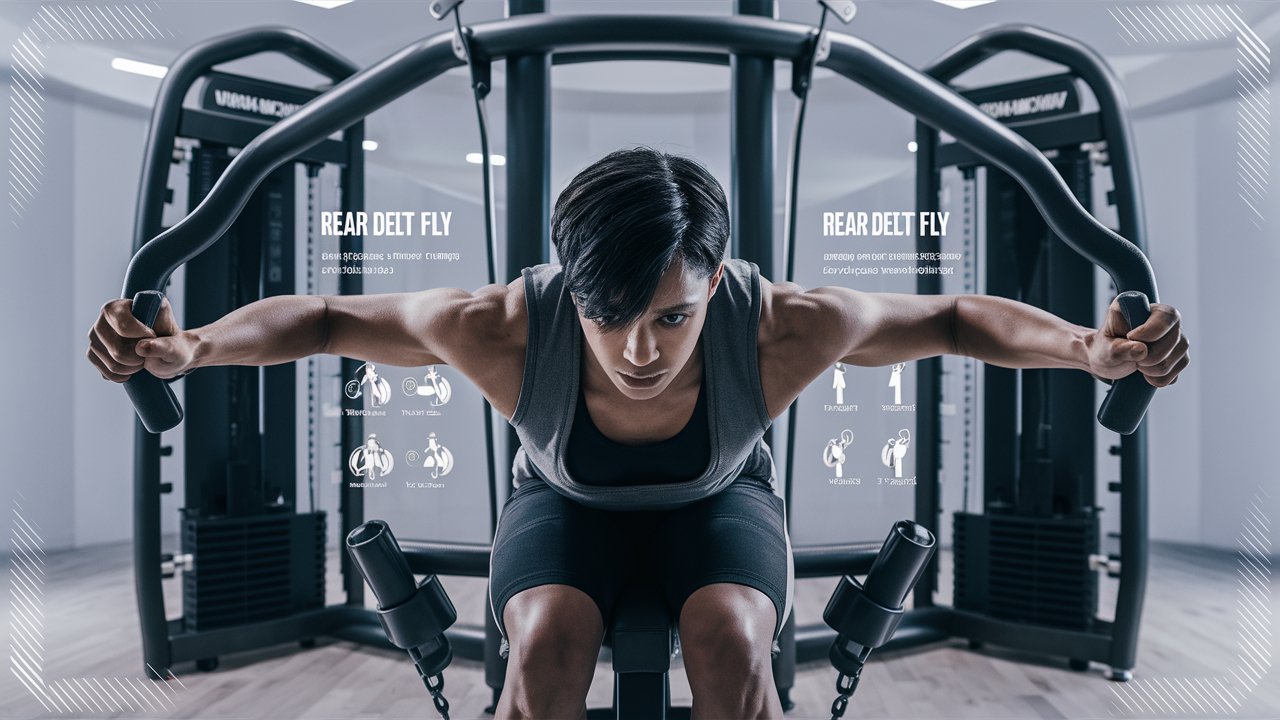The rear delt fly machine is a great way to isolate and target the rear deltoid muscles. While simpler exercises like reverse flyes can also hit the rear delts, using a machine takes the stress off your lower back and allows you to focus purely on your rear delts. In this article, we will go over how to properly perform rear delt flyes on the machine for best results.
Understanding Rear Delt Anatomy
Before learning the exercise, it’s important to understand the muscles you are trying to target – the rear deltoids. The rear delts are located in the back of the shoulder and aid in shoulder extension and external rotation. They help push the arms backwards and keep the shoulders stable during pushing and pulling movements. Isolating the rear delts is important for shoulder health and developing a balanced muscular physique.
The rear delt fly machine specifically targets the posterior deltoid muscles without involving other areas like the traps or lower back. This isolation allows you to focus all your effort on contracting the rear delts through their full range of motion.
Setting Up On The Machine
To get set up properly on the rear delt fly machine:
- Adjust the shoulder pads so they are snug against your upper back, just below the shoulder blades. The pads should support your shoulders comfortably throughout the movement.
- Adjust the seat height so your arms are parallel to the floor when gripping the handles in the starting position. You want a natural bend in the elbow to about 90 degrees.
- Sit upright with your back straight and pressed against the backrest for support. Engage your core to keep a straight spine.
- Grip the handles comfortably with an overhand or neutral grip, whichever feels best on your shoulders.
Performing The Movement
Now that you’re set up, follow these steps to perform the rear delt fly:
- With your arms bent at your sides and elbows tucked in, slowly open your arms out to the sides until they are parallel with your body.
- Focus on squeezing your shoulder blades concurrently as you raise your arms. suppose about pinching a pencil between your shoulder blades.
- Pause for a second at the top, fully contracting your rear delts.
- Slowly lower your arms back to the starting position in a controlled motion, without swinging or jerking the weight.
- Repeat for your desired number of reps. Breathe out as you lift the weight and in as you lower it back down.
Tips For Better Form
Here are some additional tips to help you perform rear delt flyes on the machine more effectively:
- Go slowly through the full range of motion to focus on the muscle contraction. Slow and controlled movements work the muscle fibers more intensely.
- Keep your shoulder blades pinched back and down throughout the movement to prevent shoulder elevation and shifting the load to other muscles.
- Brace your core to stay stable and avoid swinging or using momentum. Let the rear delts do all the work.
- Adjust weight as needed – start light and progressively overload over time to continually challenge the muscles.
- Do 2-3 sets of 8-12 reps per set, taking 60-90 seconds rest between sets.
- Complete reps in a smooth, fluid motion without jerking or sudden movements at any point in the range.
Following these steps and tips will ensure you safely and effectively target your rear deltoids using the rear delt fly machine. Stick to good form as you progressively work the muscle over time.
Machine Variations
Some rear delt fly machines may offer slight variations that work the muscles slightly differently:
- Neutral grip handles – Places less stress on the shoulders than an overhand grip for some.
- Narrow or wide grip – A narrow grip hits the inner rear delts more, while wide targets the outer head.
- Single arm – Allows for more isolation on each side and prevents swinging. Go slow to avoid compensation.
- Decline – Lowers the shoulder pad angle for a stretch in the bottom position.
Experiment with different grip widths and machine setups to find what best activates your rear delts. Always listen to your body and form to ensure safety.
Finishing Touches
To wrap things up, here are a few final tips for your rear delt fly machine workout:
- Alternate rear delt flyes with other posterior exercises like face pulls or reverse pec deck flies for a fully rounded back workout.
- Stretch the rear delts and rotator cuff afterwards to avoid post-workout soreness.
- Be patient as you build up the muscle – rear delts take time to develop thickness due to their small size. Consistency over weeks and months yields results.
- Consider drop sets, supersets or shortened rest periods to further fatigued the muscle once it has adapted to heavier loads.
- Progressive overload over time by increasing weight, reps or sets every 4-6 weeks to continue challenging the muscle.
Following a regular protocol with focus on form will yield great gains in size and strength for your rear deltoids. The machine takes isolation to the next level for fully targeting this small but important muscle.

